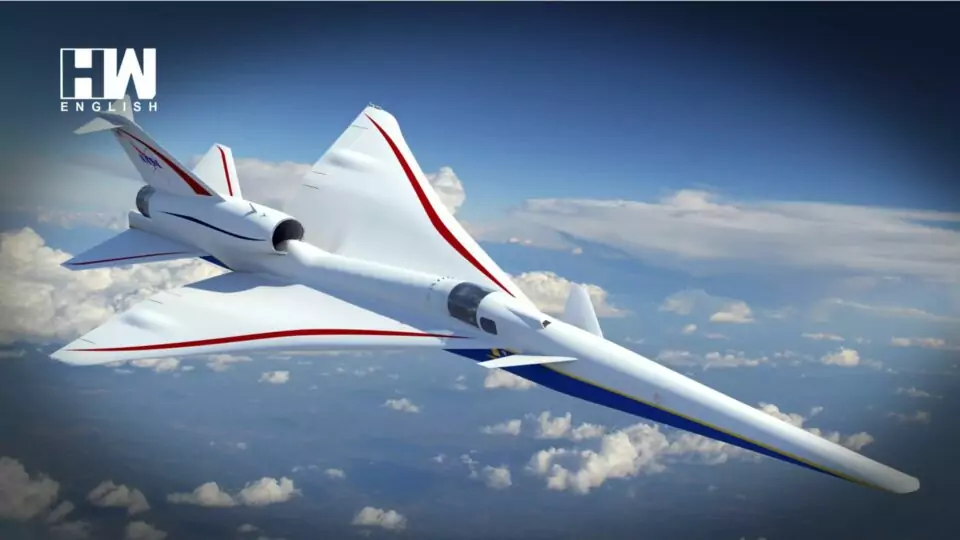NASA has unveiled the X-59, a groundbreaking supersonic aircraft designed to enable commercial supersonic travel, as part of the agency’s ongoing efforts in collaboration with Lockheed Martin Skunk Works.
The experimental aircraft, introduced in C, California, is predicted to reach speeds of 1.4 times the speed of sound, equivalent to 1,488 kilometres per hour. Scheduled for its inaugural flight later this year, the X-59 aims to redefine supersonic travel with its unique features.
The aircraft’s design incorporates a thin, tapered nose, constituting about one-third of its total length. It is strategically engineered to deflect shock waves that typically surround supersonic planes, mitigating the production of disruptive sonic booms. With a length of 99.7 feet and a width of 29.5 feet, the X-59 has undergone innovative modifications, eliminating forward-facing windows and relocating the cockpit nearly halfway down the aircraft’s length to optimize supersonic performance.
NASA’s Deputy Administrator, Pam Melroy, expressed pride in the achievement, emphasizing the transformative potential of the X-59: “NASA’s X-59 will help change the way we travel, bringing us closer together in much less time.” The project aligns with NASA’s Quest mission, aimed at influencing regulators to reconsider regulations prohibiting commercial supersonic flights over land, which have been in effect for the past 50 years due to the disruptive impact of loud sonic booms.
Also read: Donald Trump Wins Iowa Caucus
Post-flight testing, the X-59 will be flown over selected U.S. cities to gather public feedback on the aircraft’s sound and perceived noise levels. NASA intends to provide the acquired data to the Federal Aviation Administration and other regulators to inform future decisions regarding supersonic flight regulations.
Bob Pearce, NASA’s Associate Administrator for Aeronautics Research Mission, highlighted the significance of community engagement: “Our laboratory studies would say yes, but the real answer can only be found by engaging the people who would hear it during daily life.” The X-59 project marks a pivotal step toward revolutionizing supersonic travel and addressing longstanding regulatory challenges associated with sonic booms.
As an independent media platform, we do not take advertisements from governments and corporate houses. It is you, our readers, who have supported us on our journey to do honest and unbiased journalism. Please contribute, so that we can continue to do the same in future.

